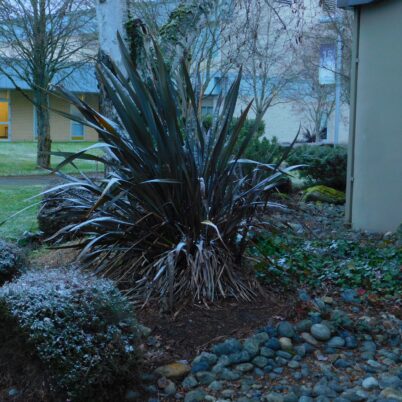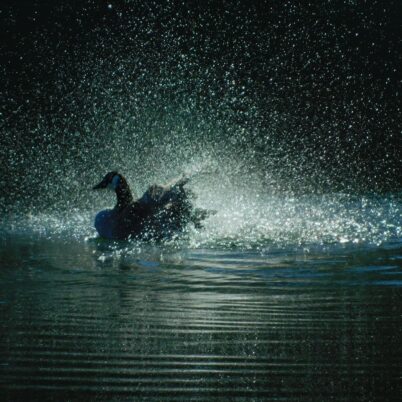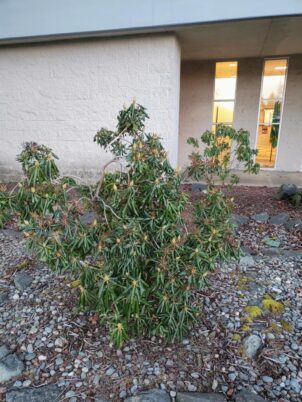The Wrong Type of Snow
by Marcia Wilson

Snow laughing matter
When Clover Park Technical College has a weather event, the procedure is clear: Alerts are passed through emails and text alerts through the website, social media, CPTCWarn and RAVE. The college policy on suspended operations such as weather-generated delays and cancellations are posted on the website. 5am is the latest this important news will be released. These are all vital components in keeping the relevant information within easy access.
When weather collides with the public, the weather usually wins.
CPTC stays transparent and available. Failure to provide accurate information for travel conditions can easily lead to disaster. One of the best such examples remains a cautionary tale from forty years ago.
What did you say?
In the winter of 1990-1991, Great Britain had a PR nightmare, and they have yet to live it down. The country was, as it is today, reliant on the public transportation available through trains. That winter was unusual for its severity and had caused more than normal trouble in keeping the rails safe and clear. In an onslaught of heavy snows and sharp frosts that shut down airports and roads, the public wanted answers. As history recorded what was to be an infamous day for BBC radio, the Director of Operations for British Rail tried to explain the challenges.
British Rail: We are having particular problems with the type of snow, which is rare in the UK.
BBC Radio: Oh, I see, it was the wrong kind of snow
British Rail: No, it was a different kind of snow.
What happened next was an embarrassing headline in the papers:
“British Rail blames the wrong type of snow”
Words matter, and the proper words are vital. The following is a list of words that are in use because they are accurate definitions for the winter meteorological conditions in the South Puget Sound.
The Inuit words for snow: an apology
The folk belief that the Inuit have 50 words for snow is an oversimplification started by a white anthropologist. This is also complicated by the fact that there was a generalized concept of what were several groups of people lumped under a derogatory name. In reality, the large word factory for weather through these groups have a linguistic knack for breaking down the variations of snow. As Laura Kelly explained in The Joy of English, “they likely don’t only have 50 words for snow – they’ll have hundreds of ways to describe it.”
In an ironic twist, the English language adopted in 2004 the word snowclone, a cliché that substitutes words to express a similar idea in a different context. Humor and sarcasm is usually employed. The coiner of the phrase was an Economics professor who had his fill of the myth about the number of words the Inuit had for snow.
The Right Words for Winter:
This list is a selection of words that are precise and apply to the residents of South Puget Sound:
Kramsnö: Swedish. Snow you can squeeze. Perfect for snowballs.
Whitecaps: When strong winds push waves in the Sound, and sometimes lakes, with enough strength that the tops of the waves cream white with foam. Whitecaps will show up at 8-10 knots, which makes them a handy “eyeballer” for the weather.
Goosefeathers: The snow that hit campus and caused delays. It describes large, fluffy flakes that drift like goosedown to the ground. They are often interlinking chains of snowflakes locked together.

Old Woman’s Picking Geese: A pre-Christian folk belief from Europe. The Old Woman is making it rain or snow by doing jobs like fluffing her featherbed, shaking out her pillows, or plucking geese.
Snötäcke Swedish. Snow on the ground.
Cat’s Track: A term from New England to Wisconsin. Enough snow to “track a cat”
Cuauhcectli: The Nahuatl (Aztec) word for “snow in trees”
A Pacific Northwest word
From the Northeastern part of Washington and south to Oregon is a regional, useful word from the old-timers: grampel. A variation of graupel, it means, “like hail” and implies wet, heavy weather.
Graupel: A soft hail that looks like porridge, breakfast grits, or oatmeal. A mixture of lumps and soft flakes. It happens when supercooled water forms into a crystal of snow, instead of a snowflake. The word is very old and Germanic in origin and exists in variations throughout the world. Sometimes called Corn Snow. In the Southeastern States it is “Hominy Snow”
Poor Man’s Fertilizer: A healthy blanket of snow on unfrozen ground. This was plowed under the fields, as its small amounts of nitrite were good for crops.

It just sounds modern
Frigorific: A word that has been around since at least the 1660’s, meaning “to make cold”
Ground Blizzard: When a windstorm kicks up the snow on the ground and makes visibility and driving conditions difficult.
Thermonasty: What happened in front of Building 17 with the rhododendrons. The photo shows the leaves have apparently shrunken in on themselves in a response to the cold weather. This movement is nastic, the “nasty” in thermonasty. It has nothing to do with nasty or nice. It is also a poorly understood phenomenon, in the words of the National Library of Medicine. The Aztec also have a word that applies to this phenomenon, tlicuetihui: for a plant to wither due to fire, snow, or an herbicide
Penitentes, or Penitent’s Snow: A word that entered modern language in 1839 when Charles Darwin had to crawl through a field of this stuff on his way through the Piuquenes Pass . Like the locals, he thought it was wind-sculpted, but later it was determined to be “tall, thin blades of hardened snow sculpted by the sun. As the sun hits the snow, it transforms it directly into vapor without melting it, through sublimation. Initially smooth, the snow surface thus develops depressions, hills, and hollows as some regions sublimate faster than others.”
Snirt: A combination of snow and dirt. This may have originated from the Midwest of the United States.
Calling out:
If you have a word for winter weather, let us know!